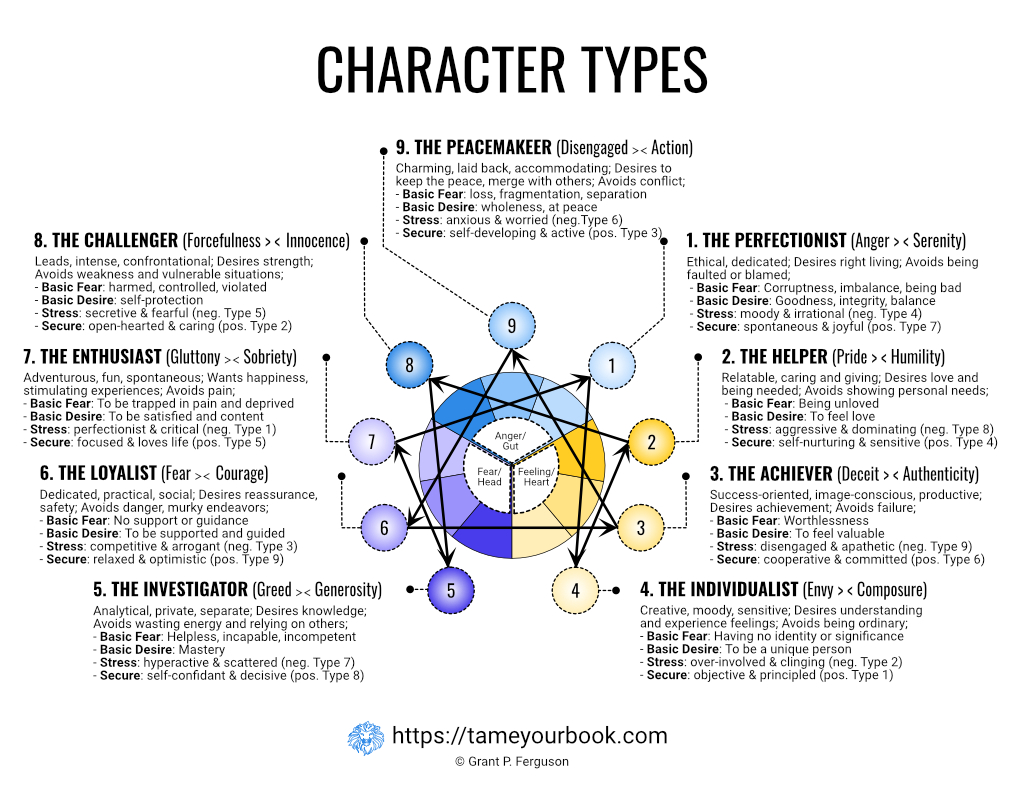

Character Development Character development: 7-step guide for writers
Creating compelling characters is a fundamental part of writing a novel. Well-developed characters not only enrich the story but also engage readers by making them emotionally invested in the narrative. Whether you are writing a fantasy epic, a contemporary romance, or a thrilling mystery, understanding how to develop your characters is essential. Below, we explore some valuable resources that can help you create dynamic characters who leap off the page and into the hearts of your readers.
How to Develop a Character: 7 Simple Steps

One effective guide to character development is captured in these seven simple steps. This resource breaks down the process into manageable parts, making it easier for new and seasoned writers alike. Each step focuses on a different aspect of character creation, from defining your character’s backstory to understanding their motivations and desires. By following these steps, you can craft multidimensional characters who feel real to your readers. Remember, the key to great character development is to be deliberate and thoughtful about each character’s journey throughout your story.
Learn Character Development for Your Novel

Another fantastic resource focuses on character types and how they can influence the dynamics of your story. Understanding different character archetypes—from heroes and villains to mentors and sidekicks—can greatly enhance the way you construct your narrative. Each character archetype serves a unique purpose and brings different conflicts and resolutions to the table. By experimenting with these character types, you can give your story depth and complexity, weaving in relationships that resonate with readers. In doing so, not only do you meet the expectation of character development, but also invite readers to engage and relate to your characters on a deeper level.
As you dive into character development, consider the motivations that drive your characters. What do they desire most? What fears hold them back? These questions are crucial in shaping characters that evolve throughout the story. Strong motivations create opportunities for interesting conflicts, whether they arise from personal struggles, external obstacles, or relationships with other characters. Think about how your character reacts when their goals are threatened—this will reveal a great deal about who they are and how they will grow over the course of your novel.
Equally important is a character’s backstory. By delving into their past, you not only enrich their personalities but also provide context for their actions and decisions. A well-crafted backstory can illuminate why a character behaves in certain ways, which can create sympathy or even antipathy from the readers. It’s essential to weave this backstory into your narrative naturally, allowing readers to discover these layers at an organic pace. While it may not be necessary to lay everything bare at the get-go, providing nuggets of information throughout the story can keep readers intrigued and invested.
Additionally, consider the relationships your characters have with one another. Relationships often reveal character traits that might not be evident in isolation. Look into how characters interact with family, friends, and foes; these dynamics can highlight strengths and weaknesses that further flesh out their personalities. Is your character nurturing or self-involved? Trusting or suspicious? How they respond to others creates a richer narrative fabric, giving readers a live-action understanding of the characters’ complexities.
Moreover, dialogue plays a crucial role in character development. The way characters speak reflects their background, education, and emotional state. Crafting dialogue that aligns with each character’s unique voice can bring authenticity to your writing. Pay attention to their speech patterns, favorite phrases, and level of formality; these aspects will enrich your character and help differentiate them from others. Remember that strong dialogue can carry the story, revealing as much through what is unsaid as through words spoken.
As you create your characters, it can be helpful to keep a character worksheet or profile. This tool can help you track essential details such as age, physical appearance, personality traits, goals, and relationships. A well-documented character profile will serve as a reference, ensuring consistency throughout your novel. Additionally, revisiting this profile while writing can inspire new plot developments, character arcs, and interactions that may not have been initially envisioned.
At the end of the day, developing characters is much about experimentation as it is about technique. Do not be afraid to let your characters surprise you, as their growth can lead your plot in intriguing directions. Allow yourself the freedom to explore various dimensions of their personality, and watch how they evolve in response to the challenges you place before them. Remember, the journey of developing characters is one of the most rewarding aspects of writing—it is where you breathe life into your story.
In summary, character development is a multifaceted endeavor that requires careful consideration of numerous elements, from backstory to dialogue, and relationships to motivations. Use the resources available to you as guidance along this journey. Remember the immense role that characters play in stories—they are the heart and soul that captivates your readers’ imaginations. As you craft your next novel, take the time to ensure your characters are as dynamic, intricate, and compelling as the worlds they inhabit. Your readers will thank you for it!







